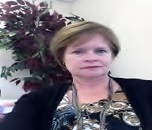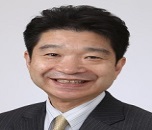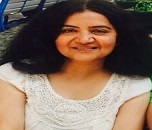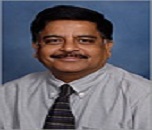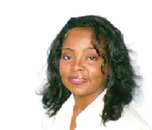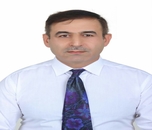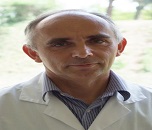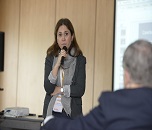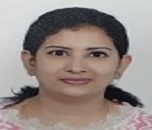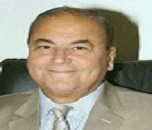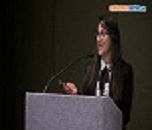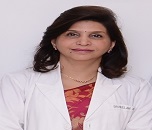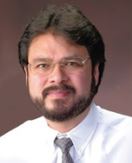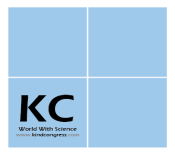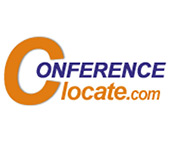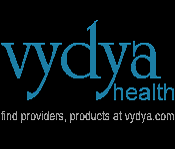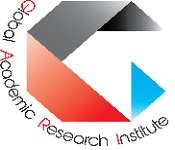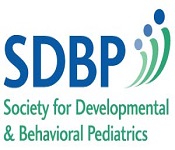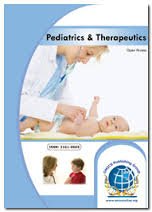Theme: Leading medications and essential care of neotrics
Faneotrics 2019
ME Conferences is overwhelmed to announce the commencement of “WORLD NEONATAL, PEDIATRICS AND FAMILY MEDICINE CONFERENCE 2019” to be held on March 21-22, 2019 at Dubai, UAE with the innovative theme “Leading medications and essential care of Neotrics”.
ME Conferences organizes a series of conferences of 1000+ international Events inclusive of 1000+ Conferences, 500+ future and former Symposiums and Workshops in USA, Europe & Asia with support from a thousand additional scientific societies and publishes 700+ Open access Journals that contains over 50000 eminent personalities, acknowledged scientists as editorial board members
This innovative conference discuss the directions of Pediatric Nutrition, surgery and neonatal care with advanced medical and family medicine in this fast moving and developing science and technology . World Conference on Faneotrics: neonatology and pediatrics provides the scope for opportunities to learn about latest technologies, medical practices and mainly focuses on spreading the awareness about how to prevent neonatal and pediatric diseases and various challenges in the field of neonatology and pediatrics.
We are awaiting a great gathering of scientists, research scholars, surgeons, physicians, scientific faculty, pharmaceutical industries and manufacturers and more audience from Dubai, UAE, Dubai as well as other continents and expect a highly interesting scientific as well a representative event.
WHY TO ATTEND?
FANEOTRICS 2019 provides the best platform to learn, inform and discuss new ideas, current discoveries, medications, failures and issues related to child health as well as women healthcare and is progressed by knowledgeable, skilled and experienced neonatologists, pediatric scientists, pediatric health professionals, neonatal nurses and hospitals, pediatric nutritionists, pediatric researchers, pediatric health care associates, pharmaceutical companies and a team of many other multidisciplinary specialists and medical device manufacturing company. Faneotrics 2019 Conference aims in gathering worldwide experts and eminent people to share and discuss their novel ideas and research work so that it would be beneficial for children suffering from various infections and disorders. Faneotrics 2019 objective is to gather audience from everywhere throughout the world to present current research and to disseminate the new trends in the field of Pediatrics, Neonatology and Family medicine.
It will be a great platform for the young budding researchers and delegates to breakout sessions, highlighting clinical projects, education, and research studies and also to gain immense knowledge from the Conference with the Neonatologists, Pediatricians, Primary Care Doctors and Family Physicians.
We likewise respect the cooperation of scientists, research scholars, surgeons, physicians ,scientific faculty and more audience ,Presidents, CEO's, Delegates and Industrial administrators from Pharmacy and Health care divisions making the meeting an ideal stage to arrange, share perspectives and information through interactive keynote, plenary, posters and B2B discussions.
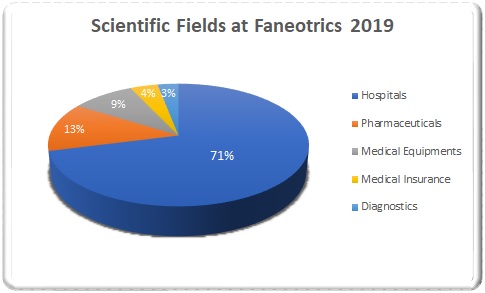
TARGET AUDIENCE
- Neonatologist
- Pediatricians
- Physicians
- Students
- Pediatric surgeons Pharmacists
- Pediatrics Nurses
- Specialists in adolescent medicine
- Academic Professionals
- Research Scholars
- Pharmaceutical Companies
- Primary care doctors
- Primary care professionals
- Nurses
- Associations and Societies
- Pediatric and Faculty
- Medical Colleges
- Pediatrics Physicians
- Training Institutes
- Manufacturing Medical Devices Companies
- Hospital Administrators
- Hospital General Counsel
- Pediatrics Nutritionists and Dieticians
- Pediatric Gastroenterologists
- Child Development Specialist
- Pediatrics Hepatologist
- Pharmaceutical Industrialists
- Biopharmaceutical Industries
Track1: Bio psychosocial Approach
The biopsychosocial approach is a broader view for detailed description of disease. Various biological factors, psychological factors and social factors. The advantages of the BPS model are found in its holism, awareness of levels including diverse perspectives. Its advocates argue for the importance in thinking about and treating disease via a BPS lens by pointing out that social, behavioral and other factors play an obvious and major role in human health the BPS model is the basic framework for understanding health and illness. Within psychology, some have argued that the biopsychosocial framework provides the central pathway to differentiate the field of professional psychology. Earlier it was an observation that nature is a "hierarchically arranged continuing with its more complex, larger units superordinate on the less complex smaller units. "The first starts with subatomic particles and ends with the individual person and second starts with the person and finishes with the biosphere. The first one is organismic hierarchy, and second one is social hierarchy. He then sketches out some principles. The model has a general framework to guide theoretical and empirical exploration, which mastered a great deal of research since Engel's 1977 article.
Track 2: Neonatal Nursing
Neonatal nursing is a care for newborn babies up to 28 days after birth. The term neonatal comes from neo means "new" and natal means "hereditary or origin". Nursing of infants requires high skills, dedication and emotional strength for caring, dealing with various problems with prematurity, birth defects, infection, cardiac malfunctions and surgical defects etc. they are essential part of neonatal care team and are required to know basic newborn rejuvenation ,one should be able to control the babies temperature and know how to work with cardiopulmonary and pulse oximetry and its monitoring. Mostly such nurses care for infants by the time of child birth until they are discharged from hospital. The advancement of 1950s brought a flying growth in neonatal services by introducing mechanical ventilation of the newborn. This allowed the survival of smaller and smaller newborns. In the 1980s, the development of pulmonary surfactant replacement therapy improved the survival of extremely premature infants and decreased chronic lung disease. In 2006 newborns weighed as small as 450 grams and delivered with as early as 22 weeks gestation have a chance of survival. In modern NICUs, infants weighing more than 1000 grams and born after 27 weeks gestation have an approximately 90% chance of survival and majority have normal neurological development. The first newborn intensive care unit (NICU) was opened in 1965 at new haven and in 1975 The American Board of Pediatrics entrenched certification for neonatology and pediatrics.
Track 3: Clinical Pediatrics
Clinical Pediatrics board was set up in 2005 with the aim of spreading knowledge about care of children during health and disease. pediatricians and family physicians all over the country and abroad. Clinical Pediatrics follows to publish available information on advanced child-center care topics along with clinical, scientific, behavioral, educational, or ethical nature. Clinical Pediatrics allergy is also one of the most important and widely studied areas in novel research of this field. Initial detection of cancer in children also is taking earlier attention in Clinical Pediatrics cancer. Clinical Pediatrics is a medical journal that follow to publish and to available information on a change of child-center care topics along with those of a clinical, scientific, behavioral, educational, or ethical nature. Clinical Pediatrics allergy is also one of the most important and widely studied areas in novel research of this field. Initial detection of cancer in children also is taking earlier attention in Clinical Pediatrics cancer.
Track 4: Family Medicine and Nourishment
Family medicine (FM),family practice (FP) is a combined health care facility for people of all ages, generally we named them as family physician or family doctor in other places often called as general practice or General Practice Doctor (GP). This highlights the roots of the family. It is a division of primary care that provides advanced and better health care for the individual and family across all ages, genders, diseases, and parts of the body. Family physicians are often known as primary care physicians. It is based on knowledge of patient in the contact of family and the community, maintaining disease prevention and health promotion. According to the World Organization of Family Doctors (WONCA), the aim of family medicine is to provide better health like personal, mental behavioral etc. In the advanced world of health care, one thing remains constant family physicians, treating the whole person. Family medicine's is an ongoing, personal patient-physician relationship focusing on better health and care Unlike other that are limited to a particular organ or disease, Family medicine deliver a wide range of acute, chronic, and preventive medical care services to patients with patient-centered medical home also provides routine check-ups, immunization, health-risk assessments, screening tests, preventive care and counseling on maintaining a healthy lifestyle. Family physicians also manage chronic illness, from heart disease, diabetes, stroke, hypertension, cancer, and asthma etc. they also provide ongoing, personal care for the most serious health problems.
Track 5: Physical Assessment of Neonates
The doctor usually took the physical assessment of neonates within the first 24 hours of their birth, assessment begins with a series of measurements, which includes weight, length, and head circumference. The average weight of child at birth is 7 pounds and the average length is 20 inches normally. Then the doctor examines the skin and neck, heart and lungs, and abdomen and genitals too and further proceeds for nervous system and reflexes of the infant. Doctors also go for screening tests to detect problems which are not examined during the physical examination, then auscultation of the chest, and surface of the abdomen. Then move onto eyes, ears, throat, and hips, that should be performed last, as these actions are most disturbing to the neonate. The heart rate of a neonate should range from 120–160 beats/min, the respiratory rate from 30–60 breaths/min. Systolic blood pressure on first day must ranges from 50–70 mm Hg and increases steadily during the first week after birth. Blood pressure is increased by perinatal asphyxia and mechanical ventilation than gestational age. irregular heart rate, caused by premature atrial contractions, and is common, benign, and generally resolves in first days of life.
Track 6: Gastrointestinal and Urogenital Complications
Neonates are also vulnerable to surgical emergencies. Infectious gastroenteritis is commonly found in the neonates as gastrointestinal disorder .approximately 5 billion cases are found each year worldwide, most commonly in developing countries among children less than 5 year, About 2 million cases per year of Deaths are found due to dehydration. In US, 15 to 25 million incidences occur annually which results in 300 to 400 deaths. Due to acute gastroenteritis and dehydration many neonates require immediate hospitalization for their treatment. Most of the abnormalities are detected in pediatric urologic gynecology showing the issues regarding abnormalities throughout embryogenesis of urinary and sex organ tracts. Principally urogynecology issues are detected even before the birth of child with the assistance of prenatal imaging. Remaining abnormalities are detected after birth during infancy or childhood ensuing into numerous tract infections, incontinence, or abnormalities detected on physical assessment. Some system defects, however, area unit additional volatile and solely become noticeable later in life once a clinical drawback happens. Abnormal embryogenesis ensuing from innate abnormalities, begins a healthy female embryology.
Track 7: Pediatric Hematology and Oncology
During embryogenesis, hematopoiesis happens in numerous organs of the body, as well as the additional and intra embryonic yolk sac, the fetal liver, and also the preterm marrow. The event of primitive erythroblasts within the yolk sac is important for embryonic survival. Primitive erythroblasts differentiate within the tube network instead of within the extravascular space and flow into as organelle cells. After seven weeks’ gestation, hemopoietic progenitors are not any longer detected within the yolk sac. The liver is the first supply of red cells from the 9th to the 24th week of gestation. Like primitive biological process (erythropoiesis) within the yolk sac, definitive biological process within the fetal liver is important for continued survival of the embryo. In distinction to the yolk sac, wherever biological process (erythropoiesis) is restricted to maturing primitive corpuscle, macrophage, and bone cell cells, biological process (erythropoiesis) within the fetal liver consists of definitive corpuscle, bone cell, and multiple myeloid, moreover as humor lineages. Hemopoietic cells are 1st seen within the marrow of the 10- to 11-week embryo, and that they stay confined to the diaphyseal regions of long bones till 15th weeks’ gestation. Pediatric oncology may be a strength discipline in drug involved with identification and treating neonates, with malignancy. It’s thought to be one among the foremost difficult of specialties because of, despite productive treatment of the many children, there's a high death rate still connected with differing types of malignancies. kinds of pediatric oncology incorporate pediatric oncology, pediatric leukemia, malignant tumor in kids, tumor in kids, Clinical Trials, Advances in pediatric oncology Treatment oncology Nursing and Care, Advanced pediatric oncology medication, pediatric Radiation oncology, pediatric oncology Diagnostic, actinotherapy oncology, pediatric Neuro-Oncology.
Track 8: Pediatric Neurology and Psychology
Normal newborns have reflexes that facilitate survival and sensory skills that enable them to acknowledge their mother inside some weeks of birth, though the retina is well developed at birth, sharp-sightedness is poor (20/400) as a result of a comparatively immobile lens. Acuity improves rapidly over the primary 12 months, with fixation and changing into well developed by two months. A general physical examination substrate for consciousness is that the reticular activating system within the brain-stem, up to and including the thalamus and paraventricular hypothalamus .giant lesions of the cortex, particularly of the left hemisphere, also can cause coma. The term locked-in syndrome describes patients who are aware but don't have any access to motor or verbal expression as a result of huge loss of motor function of the brain-stem. Coma vigil refers to patients who appear comatose but have some spontaneous motor behavior, like eye gap or eye chase, nearly always at a reflex level. Persistent vegetative state denotes a chronic condition within which there's preservation of the sleep-wake cycle however no awareness and no recovery of mental behavior. The International League Against brain disease (ILAE) has established classifications of seizures and brain disease syndromes.
Track 9: Pediatric Cardiology and Cardiac Disorders
The presence of a heart beats suggests the heart condition. Heart beats may be useful or innocent, although it is not possible to detect the disorders by the no of heart beats high cardiac beats are very common in the initial hours and most frequently benign. Severe inherent heart disorders in baby is detected with no murmur in the least. Generally, these two are the most common ways to find cardiac disorders in neonates. Inspection and screening of Chest conformation ought to be noted within the supine position. An external bulge indicates cardiomegaly.
Screening may reveal bulged organ activity; right ventricular lift a diffuse purpose of maximal impulse; or a thrill caused by a grade IV/VI murmur. This thrill of valvular heart disease is found within the suprasternal notch. Knowledge on cardiac organ perform once is essential to preventing non-essential restriction of activities. The response against exercise performed is helpful in deciding the time for operating the cardiovascular surgery and also give the better results of various interventions made for the treatment. Generally heart diseases are congenital or genetic disorders .microdeletion in the long arm of chromosome 22 associated with DiGeorge syndrome is the most common congenital disorder found in the neonates. More accurate prediction of risk of recurrence can be diagnosed by genes during subsequent pregnancies.
Track 10: Endocrinology Disorders
In neonates or during the infancy period endocrine disorders are very common they might be suffering with that particular disorder by birth or pre matured birth is also associated with this issue the lower weight of the child and small size of gestation age. Generally the thyroid disorders are detected in the neonates, suffering from adrenal deficiency, calcium deficiency and homeostasis. According to the concept of modern endocrine physiology in targeting tissues of specific hormone receptor hormonal action are required. Three main chemical types of hormones: peptides and proteins, steroids, and amines. The peptide hormones include those released by the anterior and posterior pituitary, pancreatic islet cells, para thyroids, lungs heart and brain.
Track 11: Radiotherapy and Imaging
Radiotherapy and imaging can detect the exact cause or should say the real cause as well as the extent of disease and their relation for affecting the nearby tissues and cells. New radical approaches are introduced on CT scanning and other radio therapies for assurance of complex 3-D dose distributions .MR based dosage distribution is decided for the neonates resulting into the better treatment facilities with high accuracy using special imaging tools whether online or offline. These applications rely on the technology and digitalization of the device. Digital imaging plays an increasing role in radiotherapy and is defined truly reliable and impactful on the patients care.
Track 12: Genetics in Pediatrics
The advancement in genetic researches promised a great response towards the better treatment of genetic disorders. A careful testing and screening should be considered foe examining the actual cause of disease, the exact idea of defected gene or chromosome etc. The study of genetics at the chromosome level is called cytogenetic. Chromosomal abnormalities occur in 0.4% of live births and is a common cause of mental retardation and congenital disorders. There are two types of chromosomal abnormalities: numerical and structural. Numerical ones deal with the change in number of chromosomes and the structural ones deals with the structure change of chromosomes. These chromosomal changes occur due to the abnormal cell cycle occurred during the cell division, occurs due to the changes in the replication of the cells either the genomic cells or somatic cells.
Track 13: Obstetrics and Women Health
Obstetrics is the field of studying on pregnancy and child birth gynecology is also the same with it. Obstetrics involves the maternal as well as prenatal care that is the caring of unborn child present inside the womb of the mother with regular check-ups and visits to the doctor, various screenings are done to accommodate the care of child and mother both. The genetic screening are also to be done typically in the second trimester and then moves onto the screening of the fetal neck with the help of ultrasound. This helps to signify the risk in the birth of child and the life of the mother as well. Various tests are done through which the nutrition values and the food intake for both are decided according to what their body needs for better health. Ultrasonography is done on routine basis, evaluating for the ectopic pregnancy. Various screenings and tests are done to avoid the complication in the pregnancy diseases like pre-eclampsia, placental abruption, fetal distress, hypertension, uterine rupture, shoulder dystocia and many more.
Track 14: Premature Birth
The first textbook on premature birth was published in 1922. Normally the fetus takes 40 weeks to grow and develop in the womb, but babies born before 37 weeks is defines to be the preterm or premature birth, these babies can be healthy or deficient, if unhealthy then they require special care and treatment to avoid any problems in future. This includes three types of prematurity: mild, moderate and extreme. Mild pre-matured babies have almost completed their time in the womb and can be healthy as well while extremely pre-matured babies are those who hardly have spent 25 weeks in the womb, they require intensive care to survive as there are chances to have a premature heart, lungs, GI tract, kidneys and other organs as well. Prematurity is resulted due to various causes of maternal health as well like hypertension to mother, any infection, trauma, cervical incompetence, placental issues, chromosomal abnormalities, malformations etc.
Track 15: Pediatric Surgery and Disease Treatment
In 1879 a surgical care of birth defects is introduced to the world. It is the sub-specialty of surgery which includes the surgery of fetuses, infants, and children. In the beginning of 1970 surgeon C. Everett Koop, introduced new techniques for endotracheal anesthesia of infants allowing the surgical repair of previously untreatable defects easily and this results in the great reduction of infant, mortality rate to zero. Pediatric surgery includes surgery of neonates and fetal. Common pediatric incision includes : congenital diseases: lymphangioma, curled lip and palate, atresia of esophagus and tracheal esophageal fistula, hypertrophic pyloric stenosis, intestinal atresia, necrotizing enter colitis, meconium plugs,. Hirschsprung’s, congenital disorder, anal testes, herniation, gastroschisis, hernias; chest wall deformities: thorax excavatum; childhood tumors: like malignant neoplasm, Aden myosarcoma, Rhabdomyosarcoma, ATRT, liver tumors, teratomas; separation of conjugated twins.
Track 16: Neonatal and Adolescent Medicine
Infants within the neonatal intensive care unit (NICU) are exposed to an oversized range of medicines, most of that don't seem to be labeled to be used in infants as a result of clinical trials for safety, dosing, and effectualness of medication are lacking during this population. Hospitalized infants are usually excluded from clinical trials because of moral issues and difficulties with accomplishment. Furthermore, these hospitalized infants within the NICU have lot of possibility to be pre-term, with bigger proportions exhibiting nephritic and hepatic dysfunction. These characteristics are usually exclusion criteria for several clinical trials. Worldwide, childhood fat inclinations are inflicting severe public health affairs and, in several countries, threatening the viability of basic health care delivery. It’s an autonomous risk issue for cardiovascular diseases and considerably will increase the danger of morbidity and mortality. The last twenty years have witnessed a motivating increase in medical prices because of obesity and connected problems among children and adolescents. Childhood obesity may be a world phenomenon which is affecting all socio-economic groups, no matter what is the sex, age or ethnicity of the individual.
Track 17: Food Allergies and Infections
Neonatal allergic reaction is a vital subject to be learnt so as to market understanding and advance treatment of metabolic process, allergic, and immunological diseases in neonates. It emphasizes the epidemiological analysis on the foremost common chronic diseases of neonates—asthma and allergies similarly as several less common and rare diseases. Allergies in born babies consist of, red eyes, dermatitis (eczema), itchiness, runny nose, urticarial (hives), a bronchial asthma and redness. The viruses adore influenza virus (flu), adenovirus, respiratory process syncytial virus (RSV) and human metapneumovirus, are common causes of respiratory disorder in Newborn babies. Neonatal infections are the infections of the infant (newborn) throughout the time of life or 1st four weeks once birth. Infections could also be shrunk by Tran’s placental transfer in utero, within the passage throughout delivery (perinatal), or by alternative means that once birth. Some infant infections are apparent before long once delivery, whereas others might develop postnatal inside the primary week or month. Some infections are not inheritable within the time of life, viral hepatitis and protozoal infection and there's the higher risk of infection with preterm or low birth weight neonates.
Track 18: Vaccines and Immunization
Public perceptions regarding immunizations, notably routine childhood immunizations, are usually positive. However, parent considerations regarding the protection of vaccines have up in recent years, trendy vaccines have a high degree of safety, each infant needs between twenty five and twenty six doses of vaccine by age 18 months to be protected against 14 childhood diseases. Compliance with the manufacturer’s recommendations for route and web site of administration of injectable vaccines are vital for safety and effectiveness. All vaccines containing associate degree adjuvant should be administered intramuscularly to avoid tumor formation or death. Except for Bacilli Calmette-Guerin (BCG) vaccine, that is employed seldom, all vaccines are given either intramuscularly or subcutaneously. Several combinations of vaccines are administered at the same time while not increasing the chance of adverse effects or compromising response. Combinations vaccines facilitate solve the matter of huge numbers of injections throughout any single clinic visit. Presently out their combination vaccines embrace MMR, measles-mumps-rubella-varicella (MMRV), and numerous combos of Hib, HepB, IPV, and DTaP, as well as a DTaP-HepB-IPV combination vaccine. Extra combination vaccines, as well as some vaccines specifically for older children and adolescents, are in development. Separate vaccines shouldn't be combined into one syringe by the supplier unless approved by the Food and Drug Administration (FDA), because of this might decrease the effectiveness of every part of vaccine.
Track 19: Primary Care Ethics
The issues of values underlying this follow are typically called medical care ethics. Concerning price is commonly seen as against ethics in debates concerning newborn screening policy. Several individuals say that it's wrong to contemplate price in the slightest degree once infants’ lives are at stake. In contrast, ethicists consider that it's wrong to ignore price. Price is Associated in Nursing moral issue because of newborn screening uses collective resources (public and private) to buy the screening, similarly because the follow-up and treatment. Although screening newborns could also be fascinating, there are continuously alternative uses for resources that may conjointly save lives and stop disability—there is a chance price to their use. Policymakers therefore have Associate in nursing moral obligation of position to weigh the advantages against the prices once directive resources to newborn screening. Evidence is additionally associated with ethical issue. One cannot assess the opportunity price of resources and therefore the arrangement fairness related to a policy without having careful information, concerning the decision’s positive and negative effects. Some individuals are uncomfortable with imply evidence-based newborn screening policy, however. They argue that it sets too high a bar, if conditions thought-about for screening are comparatively rare and, within the absence of screening, could also be underdiagnosed.
Scope and importance:
Pediatric healthcare market has an increasing growth with diseases in infants. According to UNICEF, 413,000 children in the region die every year before celebrating their fifth birth date. Increase in short term and chronic diseases, results in developing healthcare facilities which contributes in leading the growth for pediatric healthcare and family medicine in Dubai, UAE region
About 2% of global healthcare expenditure was estimated by Middle East regions and which is expected to grow continuously. In Middle East advancement and government initiatives improves healthcare sector about US$ 48 billion in 2016 and expected to reach US$ 63.6 billion by 2023 at CAGR of 4.1%.
U.S highlighted a report showing UAE Business Council on the Healthcare Sector of UAE, the UAE has observed an increased growth of its healthcare sector from past forty years. In 1971 it was the time when there were just 7 hospitals and 12 health centers founded in UAE. Today, it has more than 70 public as well as private hospitals and 150 centers or clinics focusing on primary care.
As the U.A.E. healthcare sector appears an impressive growth in the coming years , great advanced opportunities for U.S.-U.A.E. partnerships. The Cleveland Clinic Dubai makes all this miracle to the possibility. A joint commencement between the U.A.E.’s Mubadala Healthcare and the Ohio-based Cleveland Clinic, recently inaugurated 364-bed hospital, it is the largest U.S.-run, U.S.-staffed hospital outside the US region and brings an advance level of specialized care to the heart of Dubai, UAE.
Pediatric Hospitals in UAE
· NovaVita Specialised Paediatric Hospital
· Danat Al Emarat Women & Children’s Hospital
· Cleveland Clinic
· Universal Hospital
· NMC Royal Hospital Khalifa City
· Universal Hospital-Baniyas Clinic
· KidsFIRST Medical Center
· Al Mushrif Children's Specialty Center
· HealthPlus Children's Specialty Center
· NMC Specialty Hospital
· Burjeel Hospital
· Advanced American Dental Center
· Bareen International Hospital
· Emirates Advanced Rehabilitation of Children Center
· Aster Clinic, Musaffah
· Mediclinic Al Bateen
· Advanced Cure Diagnostic Center
· Health & Style Medical Centre LLC

Members associated with Faneotrics research:
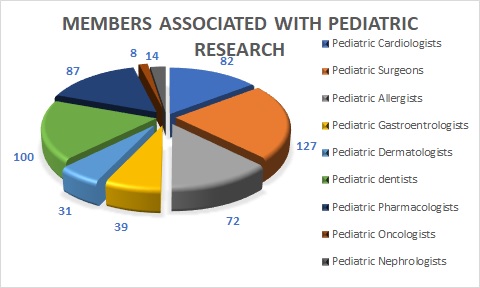
Associations and societies worldwide:
· Pediatric Trauma Society
· American Academy of Pediatrics
· Society for Pediatric Dermatology
· American Society of Pediatric Otolaryngology
· International Pediatric AssociatioN
· Pediatric Infectious Disease Society
· Euoropean Pediatric Association
· Society for Pediatric Radiology
· Academic Pediatric Association
· American Pediatric Surgical Association
· International Association for Pediatric Surgeons
· American Pediatric Society
· Society for Pediatric Research
· Society of Pediatric Research
· American Pediatric Surgical Nurses Association
· Child Neurology Society
· Society for Developmental and Behaviourial Pediatrics
· The Noth American Society for Pediatric and Adolescent Gynecology
· Indian Academy of Pediatrics
· Canadian Pediatric Association
· Pediatric Endocrine Society
· The Asia-Pacific Pediatric Association
· American Society of Pediatric Hematology/Oncology
· American Pediatric Surgical Associations

Related Societies:
Asia Pacific & Middle East: Asian Pacific Pediatric Association, The Malaysian Pediatric Association, Asian Oceania Society for Paediatric Radiology, Pediatric Cardiac Society of India, Asia Pacific Paediatric Orthopaedic Society, Asian Society for Pediatric Research, Asian Society for Pediatric Infectious Diseases, Philippine Medical Association, International Primary Care Respiratory Group, Asian Association of Pediatric Surgeons, The Pacific Association of Pediatric Surgeons, Asian Australasian Society of Neurological Surgeons (AASNS), Asian Surgical Association, Asia Pacific Spine Society (APSS), Japanese Society of Pediatric Cardiology, Middle East Pediatric Orthopaedic Society, The Malaysian Pediatric Association, Union of Middle Eastern and Mediterranean Pediatric Societies, Brain Tumour Foundation for Children, Israel Gastroenterology Association, Jordan Pediatric Society.
USA: American Pediatric Society Texas City, Asian Society for Pediatric Research (ASPR)Virginia, USA Society for Pediatric Pathology (SPP), Children’s Leukemic Research Association New York, USA, American Academy of Paediatrics Washington, USA, Alliance Societies – POSNA Rosemont, USA, American Pediatric Society, Paediatric Societies Congress, American Academy of Dermatology, American Board of Dermatology, American Dermatological Association, American Osteopathic College of Dermatology, American Society for Dermatologic Surgery, American Society for Laser Medicine and Surgery, American Society for Mohs Surgery.
Europe: International Society for Social Paediatrics, European Society For Developmental Perinatal Paediatric Pharmacology, Society of Chiropodists, European Society for Paediatric Neurosurgery, Italian Society of Pediatrics, European Academy of Paediatrics, European society of Pediatric Neonatal Intensive Care, Czech Neonatal society, European academy of pediatrics societies, International Society for Social Pediatrics, Paediatric Surgery (EBPS), British Association of Paediatric Surgeons (BAPS), Society of Pediatric Surgeons of the Netherlands, German Pediatric Association, Association of Surgeons of the Netherlands, Society of Residents in Surgery of the Netherlands, ,European Paediatric surgeons Association, The Pacific Association of Pediatric Surgeons(PAPS)
Related Conferences:
- Pediatric Infectious Diseases: A Primary Care and Hospitalist Approach, January 21-25, 2019 Sarasota, FL, United States
- Swiss Society of Neonatology Annual Meeting 2019, 22 January 2019 Aarau, Switzerland
- 15th Annual Pediatric Specialty Update for Primary Care Physicians, January 25, 2019 Seattle, WA, United States
- Pediatric Pearls: Development & Behavior, February 20, 2019 Oak Brook, IL, United States
- 13th St Jude-Viva Forum in Pediatric Oncology 2019, 02 March 2019 - 03 Mar 2019 Singapore, Singapore
- 31st World Congress on Pediatric Nursing March 04-05, 2019 Paris, France
- 20th Annual World Congress on Pediatrics March 18-19, 2019 Chicago, USA
- International Conference on Pediatrics, Nursing and Healthcare April 11-12, 2019 Abu Dhabi, UAE
- 23rdWorld Nutrition & Pediatrics Healthcare Conference April 29-30, 2019 Helsinki, Finland
- 12thAsia Pacific Pediatrics Congress May 1-2, 2019 Seoul, South Korea
- 22nd Global Summit on Pediatrics, Neonatology & Primary Care May 30-31, 2019 Istanbul, Turkey
- International Conference on Maternal Fetal and Neonatal Medicine May 30-31, 2019 Istanbul, Turkey
- International Conference on Pediatrics & Neonatology, 05 Jun 2019 - 06 Jun 2019 London, United Kingdom
- 27th International Conference on Clinical Pediatrics June 10-12, 2019 Berlin, Germany
- International Conference on Pediatric Healthcare June 12-13, 2019 Prague, Czech Republic
- WSP 2019 — World Summit on Pediatrics 2019, 20 June 2019 - 23 Jun 2019 Berlin, Germany
- Pediatrics 2019 — International Congress on Pediatrics & Neonatology, 19 Jun 2019 - 20 Jun 2019 Venice, Italy
- 2nd Edition of Academic Meet on Pediatrics, 17 - 19 Oct 2019 Orlando, United States
- Annual Midwifery and Pediatric Nursing Conference November 25-26, 2019 Dubai, UAE
Most supplements for children do not contain enough vitamin-D
Vitamins are important for the well being of an individual as they help in smooth functioning of several body systems. Low levels of vitamin D are common in children, especially during the winter. Deficiency of Vitamin D may leads to rickets and abnormally low levels of Calcium in the blood called hypocalcemia. The main source of Vitamin D is sunshine rather than diet.
Most kids’ multivitamin products don’t contain the recommended daily vitamin D dose. Only a few such multivitamin products have recommended daily vitamin D dose of 400 IU. It was also found that supplements contain only Vitamin D or labelled specifically for healthy bones typically had a higher vitamin D content.
The researchers found 67 multivitamins, made by 24 different manufacturers, and 24 vitamin D/healthy bones products aimed at children under the age of 12. The daily vitamin D dose in the multivitamins surveyed ranged from 0 to 800 IU. Only one multivitamin was suitable for use from birth, supplying 200 IU/day of vitamin D, while for children over 6 months. Some of the products giving a dose range would only supply the recommended vitamin D level at the highest dose. For children under six months of age, only one multivitamin contained more than 340 IU/day vitamin D, but this was only recommended from four months of age.
Mitigating the effects of childhood trauma
Childhood trauma can be caused by any situation for the child as by frightening or overwhelming and during which the child feels scared and helpless. This situation is just often a injury or a natural disaster. Childhood trauma doesn’t have to occur directly to the child. It is also important to remember that just because a child endured a tragedy or a near-death experience, doesn’t mean he’ll automatically be traumatized. Some of the kids are much less affected by their circumstances than others.
The Adverse childhood experiences (ACEs) can lead to the mental health disorders in adolescence. The researchers examine the connection between ACEs and adolescent mental disorders – including behavior and conduct problems, anxiety, and depression –the protective effects of family functioning, social capital, and civic engagement on mental health in adolescents with the childhood experiences.
The children under the age of 18 who has experienced the trauma are at risk for health problems is staggering. There are Some of the most frequent and well-known psychological and emotional symptoms of trauma are:
- Anxiety
- Dissociation
- Anger/aggression
- Depression
- Guilt and shame
- Confusion, shock, and denial
Children with Autism Spectrum Disorder Experience Poor Sleep Habits
Many of the babies and children have settling and sleep problems during night. In children, with Autism Spectrum Disorder (ASD), these problems can be more severe than in other children. Several factors have been profoundly affecting the sleep of 2- to 5-year-olds with autism spectrum disorder (ASD). They are more likely to resist their bedtime, have trouble getting to sleep, suffer from anxiety regarding sleep, wake up in the middle of the night, and experience night terrors. It was already known that kids with Autism struggle with sleep issues. It has been consistently found that more than half of them and possibly as many as 4 in 5 have at least one chronic sleep disorder.
Kids with autism were 45 percent more likely to have moderate sleep problems than children with other forms of developmental delay, and the 75 percent of them are more likely than typical kids. Children with symptoms of autism has worse on nearly all aspects of sleep. Only in a couple of areas sleep apnea and daytime sleepiness appear to have about the same level of difficulty as other kids.
Children were divided into four groups: children with a classification of an autism spectrum disorder, children with other developmental delays with characteristics of autism spectrum disorder, children with other developmental delays without characteristics of autism, and children in a general population group. Researchers found that children with autism spectrum disorder or other developmental delays with autism characteristics were more than twice as likely to experience sleep problems as children in the general population group.
Conference Highlights
- Bio Psychosocial Approach
- Neonatal Nursing
- Clinical Pediatrics
- Family Medicine and Nourishment
- Physical Assessment of Neonates
- Gastrointestinal and Urogenital Complications
- Pediatric Hematology and Oncology
- Pediatric Neurology and Psychology
- Pediatric Cardiology and Cardiac Disorders
- Endocrinology Disorders
- Radiotherapy and Imaging
- Genetics in Pediatrics
- Obstetrics and Women health
- Premature Birth
- Paediatric Surgery and Disease Treatment
- Neonatal and Adolescent Medicine
- Food Allergies and Infections
- Vaccines and Immunization
- Primary Care Ethics
To share your views and research, please click here to register for the Conference.
To Collaborate Scientific Professionals around the World
| Conference Date | March 21-22, 2019 | ||
| Sponsors & Exhibitors |
|
||
| Speaker Opportunity Closed | Day 1 | Day 2 | |
| Poster Opportunity Closed | Click Here to View | ||
Useful Links
Special Issues
All accepted abstracts will be published in respective Our International Journals.
Abstracts will be provided with Digital Object Identifier by






